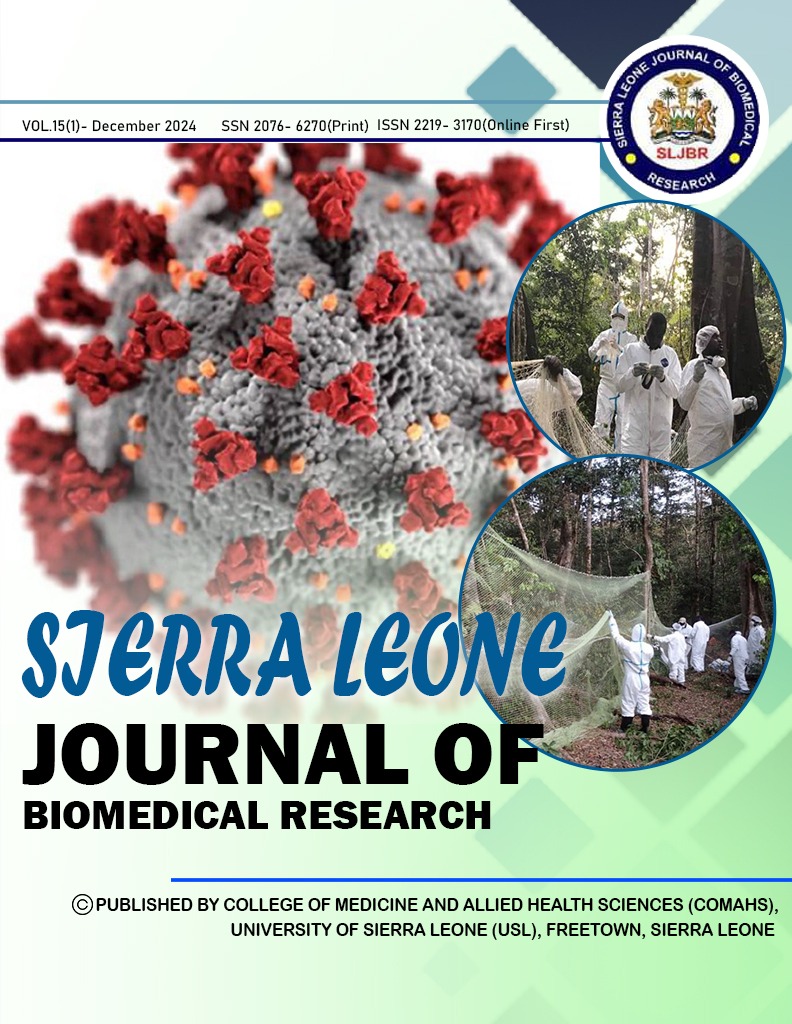ETHNOPHARMACOLOGICAL INFORMATION ON TRADITIONAL USE OF MEDICINAL PLANTS IN FREETOWN, SIERRA LEONE.
DOI:
https://doi.org/10.4314.6Abstract
Background: The use of herbal medicinal products has greatly increased over the years, with less than 80% of people worldwide depending on some of their primary health care services. Safety, lack of enough resources and improper monitoring among others remain important issues with the use of herbal medicines and the impact of their harvest on the environment. When compared with studies from other parts of the world, this study and some others which were conducted earlier conducted in Sierra Leone indicates promising potentials and effectiveness of herbs in the treatment of some diseases.
Methods: Twenty respondents who regularly practice and deal in traditional herbal medicine provided information on the constituents which make up the recipes of their products, the sources of raw material, and types of health conditions treated with the plants.
Results: A total of 92 species of medicinal plants from 41 flowering families have been used by traditional herbalists to produce herbal medicines that are indicated for the treatment of 10 different medical conditions. Diseases with the highest treatment included malaria, gonorrhea, dysentery and toothache. The most cited species out of 92 mentioned, was Newbouldia laevis, while the most cited family of medicinal plants was Fabaceae with the highest value of family importance (75%).
Conclusion: As established by the traditional healers, the mode of extraction of these plants from their sources for medicinal purposes is considered sustainable with minimal damage to the study area; therefore, sustainable use can be encouraged or enforced in conjunction with special medicinal plants cultivation.
Keywords: Traditional Herbal Medicine Practitioner (THMP), medicinal, ethnobotanical, Sierra Leone.

